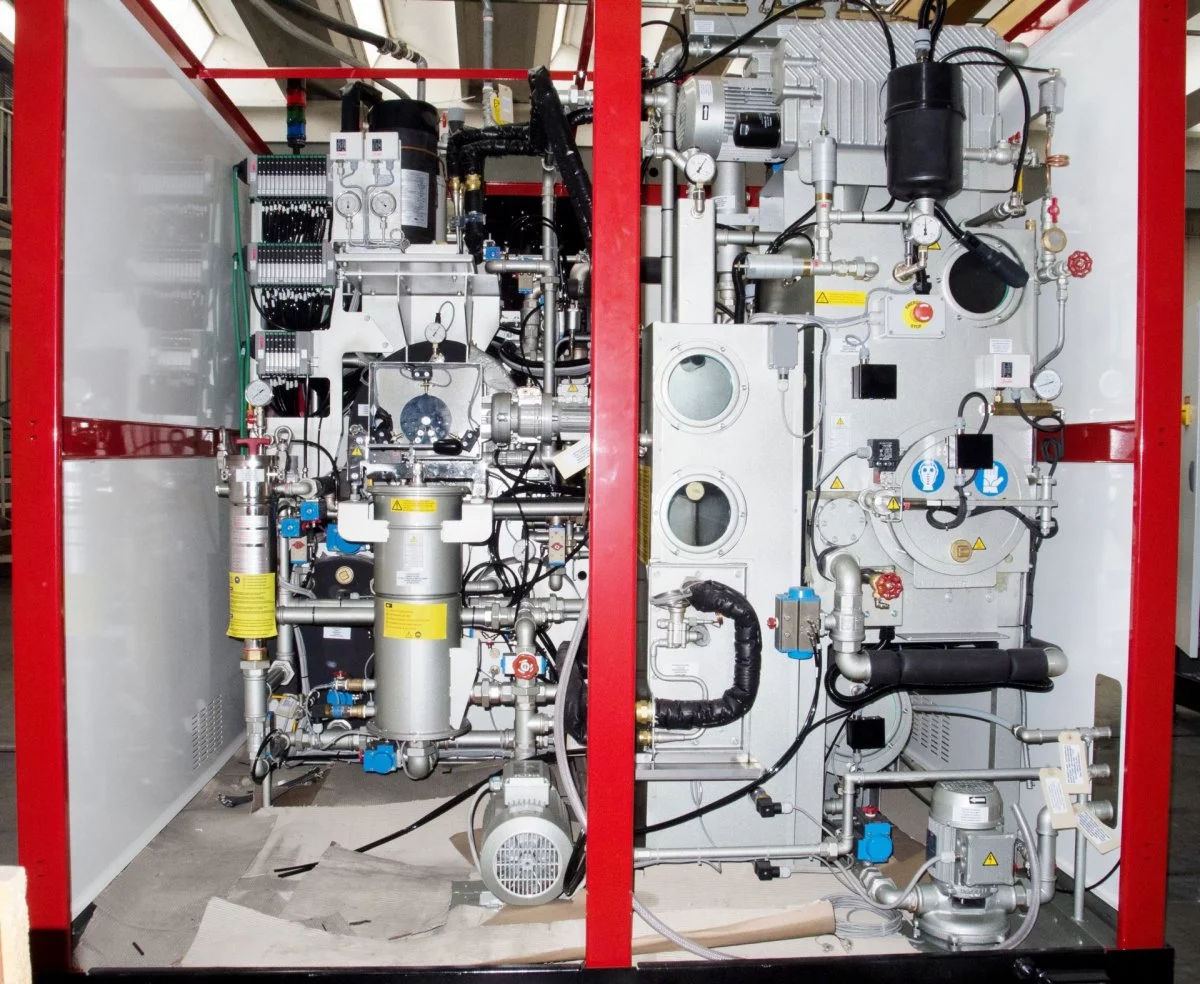
Installation engineers and designers clash daily over which cleaning agent to choose for cleaning the surface of metal components used in different industrial sectors.
Water-based or semi-aqueous detergents, Hydrocarbons, HCFCs, fluorinated and brominated solvents …
Among all these alternatives, today there is still an excellent solution that differs in its ability to ensure the execution of an effective washing and drying cycle of quality components at a reasonable price and in full compliance with the regulations.
We are talking about industrial machines for metals that use the most tested chlorinated solvent ever as a cleaning agent: perchlorethylene.
Hermetic circuit washing systems are the ideal technology for precision cleaning of metal components due to their high ability to remove stubborn dirt and excellent cleaning results on components with complex geometry.
In the presence of a further drying phase by vacuum or by air recirculation, all of the solvent present on the surface of the parts and in the system is recovered, favoring the reduction of consumption and facilitating the achievement of the zero emissions threshold.
The hermetic circuit washing systems are particularly efficient with components characterized by deep holes, through holes, complex geometries and welds.
Solid contaminants such as metal powders, shavings, inorganic residues contained in the powders are effectively removed thanks to the mechanical action of the machine.
Through the installation of transducers in the treatment chamber, the machines can be equipped with ultrasound, a winning weapon when it is necessary to remove solid residues of particularly difficult oils.
When the waves are transmitted to the solution, a rubbing action is triggered on the surface of the components by cavitation and, immediately, a rapid accumulation and collapse of thousands of tiny bubbles.
These modern degreasing techniques are used in the hermetic chamber where the solvent is introduced after the closure of the same: the solvent and the vapors that form during the final washing phase are recovered from the drying circuit at the end of each cycle.
After drying, in fact, the vapors are conveyed through an activated carbon recovery system that further reduces the remaining emissions.
In practice, solvent emissions are reduced by approximately 99%.
Although the use of hermetic circuit washing systems may initially be more expensive, the superior cleaning results and the substantial savings in terms of solvent used determine its undisputed success.
Perchlorethylene has been the key protagonist for about 50 years in the precision washing sector of metal components.
Today, the progress achieved in the development of processes and instruments, the reduction of emissions and the high possibility of recovering the solvent make PERC the most effective solvent.
Despite the high performance, many companies have replaced PERC with other solvents or, in some cases, have replaced the washing technology used.
This decision is the result of an erroneous perception of the legislation that regulates the safe use of this chlorinated solvent.
While trichlorethylene has been banned and gradually replaced by other chlorinated solvents today considered worthy substitutes for solvents that have a strong impact on the environment, PERCHLORO continues to be produced in the face of ever-increasing demand.
It is possible to use PERCHLORO safely if you comply with the regulations during handling, use and disposal.
We recommend that you read this article to learn more about how to safely use Perchlorethylene in industrial washing systems for metals.
Many of our competitors and other companies prefer to replace chlorinated solvents with aqueous solutions or other detergents because they perceive them as solutions characterized by a low environmental impact.
In 1997, the ECSA carried out a series of assessments to compare the data on the environmental impact of the washing systems with PERC and those with water technology: both gave significant results but in the case of Perchlorethylene the monitoring of emissions has proved to be an efficient tool for reducing emissions.
In the case of water washing systems, despite the application of specific treatments for cleaning residues, the environmental impact is between 200 and 2000 times greater than degreasing using PERC.
Conclusion:
Ask for a meeting with our technical consultans to know more about FIRBIMATIC metal cleaning solutions: click here and fill out the form!
We and selected third parties use cookies or similar technologies for technical purposes and, with your consent,
also for other purposes as specified in the .
If you close this banner with a tick or click on "Decline", only technical cookies will be used. If you want to select the
cookies to be installed, click on 'Customise'. If you prefer, you can consent to the use of all cookies, including
cookies other than technical cookies, by clicking on "Accept all". You can change your choice at any time.